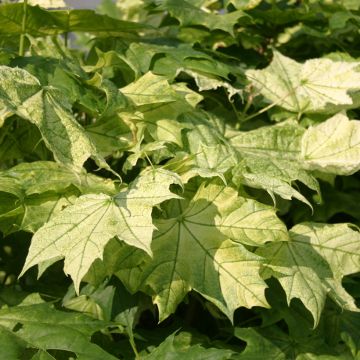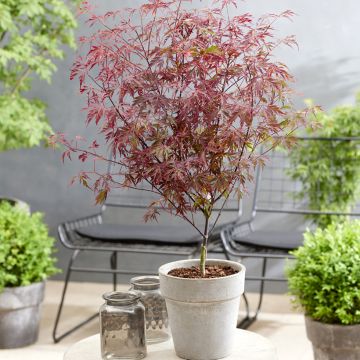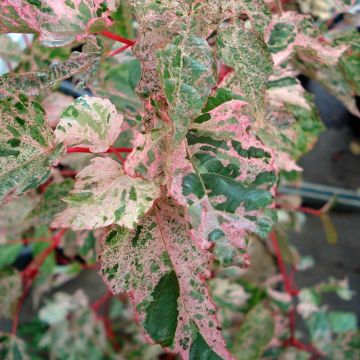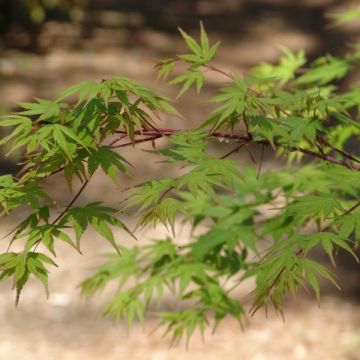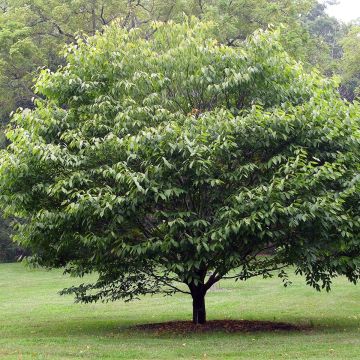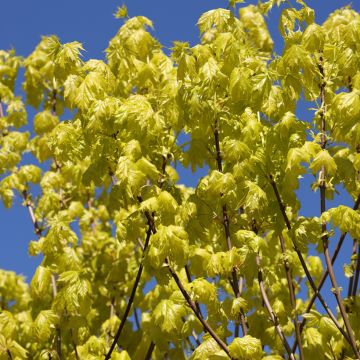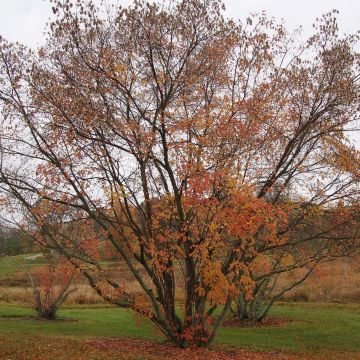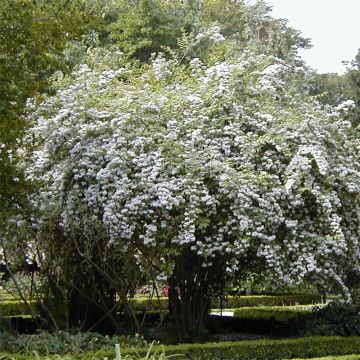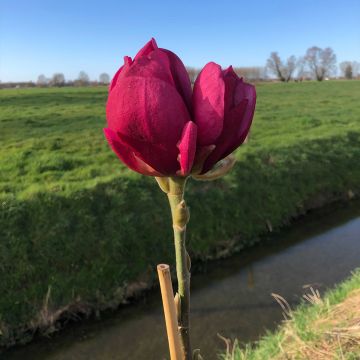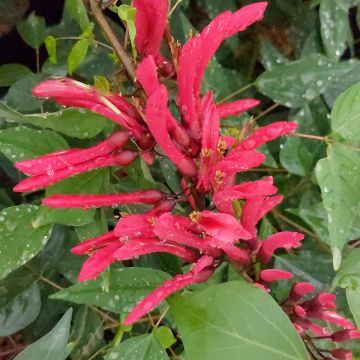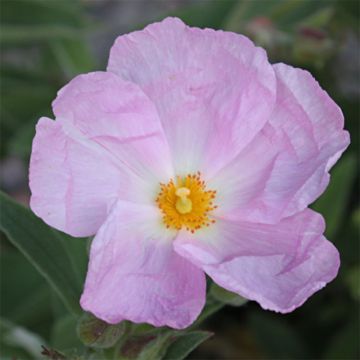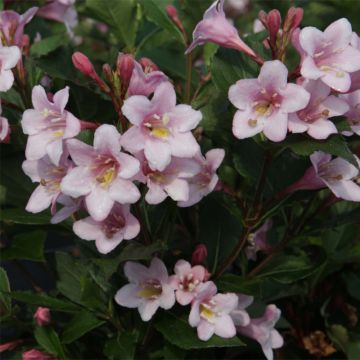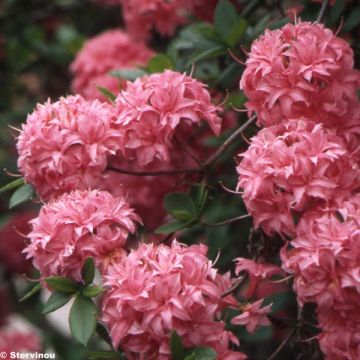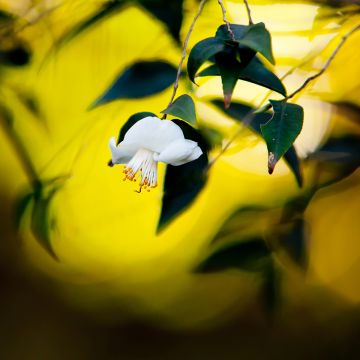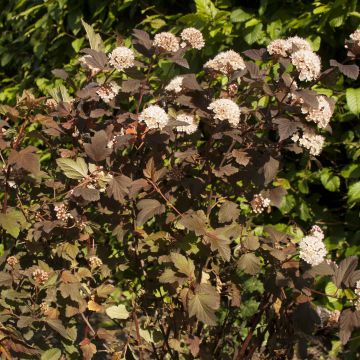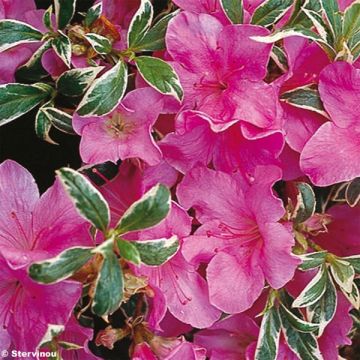Shipping country and language
Your country of residence may be:
Your country of residence is:
For a better user experience on our website, you can select:
Your shipping country:
Andorra
Austria
Belgium
Bulgaria
Canada
Chile
Croatia
Cyprus
Czechia
Denmark
Estonia
Finland
France
Germany
Greece
Hungary
Iceland
Ireland
Italy
Latvia
Lithuania
Luxembourg
Malta
Monaco
Netherlands
Poland
Portugal
Romania
Slovakia
Slovenia
Spain
Sweden
Switzerland
United Kingdom
We only deliver seed and bulb products to your country. If you add other products to your basket, they cannot be shipped.
Language:
French
German
Spanish
English
My Account
Hello
My wish lists
Plantfit
Log in / Register
Existing customer?
New customer?
Create an account to track your orders, access our customer service and, if you wish, make the most of our upcoming offers.
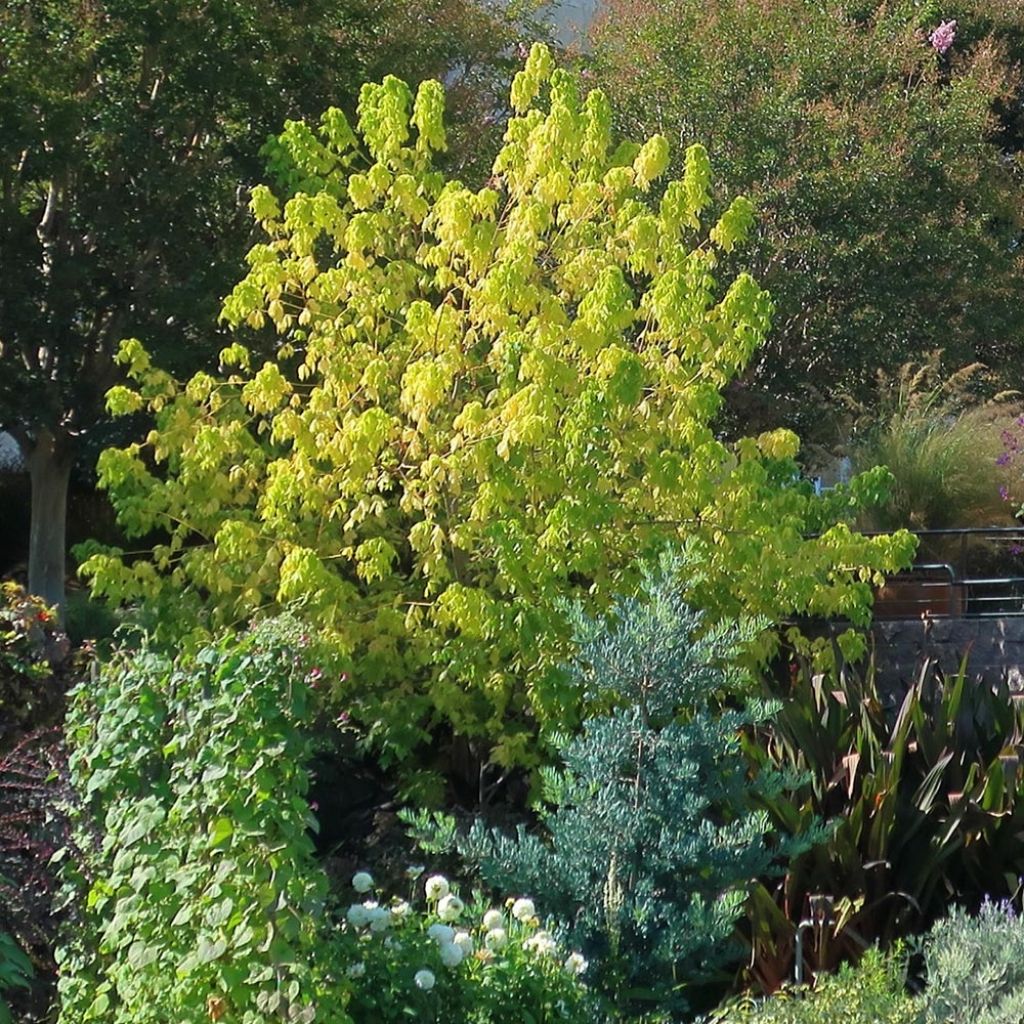

Acer negundo Kellys Gold - Maple
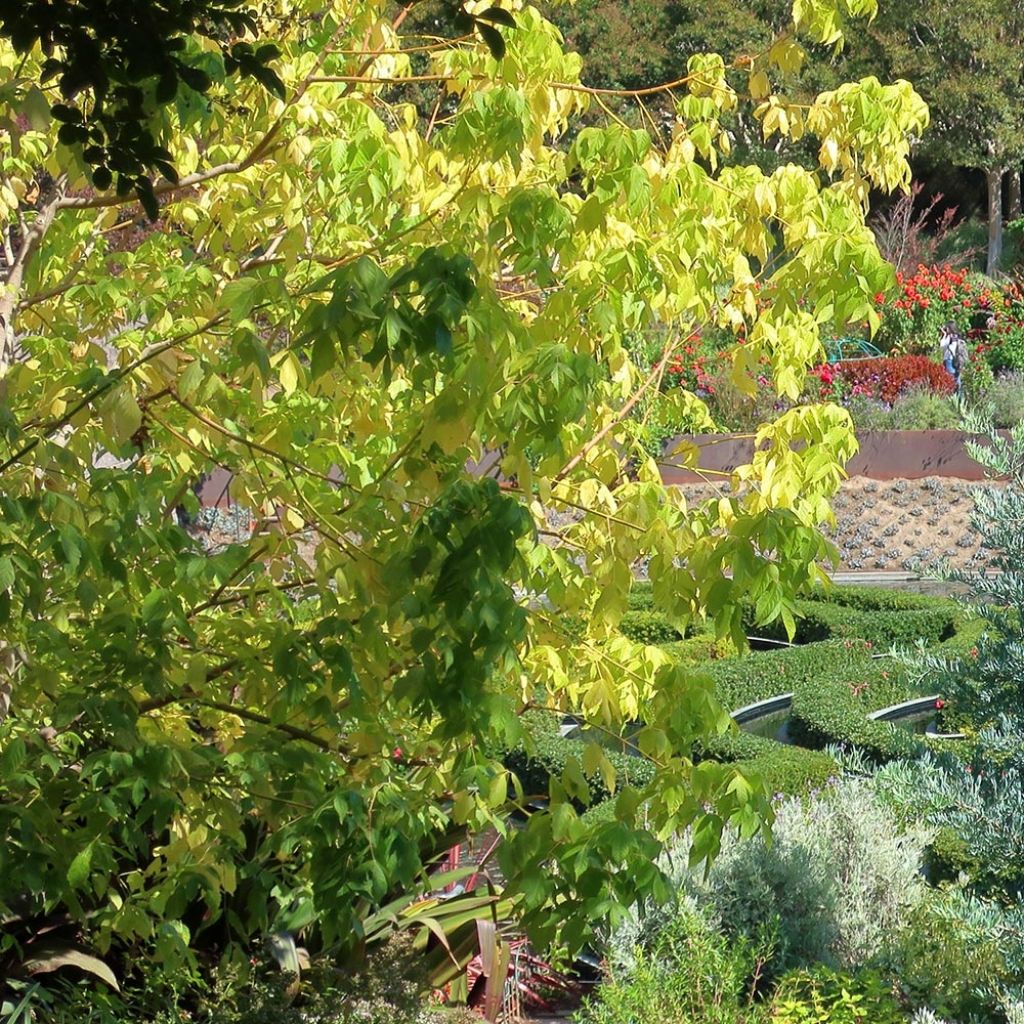

Acer negundo Kellys Gold - Maple
Acer negundo Kellys Gold - Maple
Acer negundo Kelly's Gold
Box Elder, Ash-leaved Maple, Manitoba Maple
After 1 week of transportation (bank holiday + delay by the carrier), the maple arrived in good condition despite the crushing of the package in the lorry. Careful packaging and a beautiful habit of the tree with its light leaves of a beautiful, bright light green.
Jean-Michel , 25/05/2023
Order in the next for dispatch today!
Dispatch by letter from €3.90.
Delivery charge from €5.90 Oversize package delivery charge from €6.90.
More information
This item is not available in your country.
Schedule delivery date,
and select date in basket
This plant carries a 24 months recovery warranty
More information
We guarantee the quality of our plants for a full growing cycle, and will replace at our expense any plant that fails to recover under normal climatic and planting conditions.
Oversize package: home delivery by special carrier from €6.90 per order.
Express home delivery from €8.90.

Does this plant fit my garden?
Set up your Plantfit profile →
Description
Acer negundo 'Kelly's Gold' is a small-sized variety of ash-leaved maple, well-suited to small gardens. It is valued for the golden colour of its foliage. Covered in gold in spring, this small tree becomes somewhat greener in summer before turning a dark gold or coppery gold in autumn. With its harmonious silhouette and dazzling foliage, this cultivar deserves a prominent place in a lawn.
Acer negundo, also known as Box elder, American Maple, or Manitoba Maple, belongs to the Sapindaceae family. It is native to the western United States and Virginia, but can also be found in Florida, Canada, and Quebec. This hardy tree prefers the vicinity of watercourses and wetlands, but can tolerate somewhat dry summers once established. It prefers clay-limestone soils, but can adapt to a wide range of moderately acidic soils. In its natural habitat, Acer negundo forms a large-crowned tree, reaching a height of 15m (49ft). It is a deciduous tree that loses its leaves in autumn.
Smaller in size, 'Kelly's Gold' rarely exceeds 6m (20ft) in height and 4m (13ft) in width. It forms a short and stout single trunk, with lower branches if it has enough space. If surrounded by other shrubs or trees, it tends to grow taller to seek light. Its natural habit is rounded, regular, and harmonious, supported by thin and fragile branches that are quite brittle. Its rough grey-ashen bark cracks over time, becoming a darker shade of grey. The young branches are bluish-green and covered with a white bloom. The leaves, 5 to 10cm (2 to 4in) long, are divided into 3 to 9 ovate leaflets with a pointed tip and deeply serrated edges. They are particularly bright yellow in spring, chartreuse green in summer, and turn yellowish-orange before falling. The flowering, which is quite decorative, occurs in April-May, at the same time or slightly before the development of the young leaves. It consists of clusters of pendulous, thick, greenish-yellow female flowers and long, filamentous red male flowers. This variety does not produce fruit, and its foliage tolerates sun exposure quite well. Its wood is somewhat brittle.
Acer negundo 'Kelly's Gold' only requires moist soil and a location sheltered from strong winds and moist soil. It looks stunning as a focal point in the middle of a lawn or at the base of tall trees to create a medium-sized green screen or to brighten up a slightly dull corner of the garden. For example, the dark foliage of a purple hazel or a Black Lace elderberry will beautifully enhance its sunny foliage. It also looks great as a standalone tree in a medium-sized or even small garden, as long as it is regularly pruned to control its size.
Acer negundo Kellys Gold - Maple in pictures
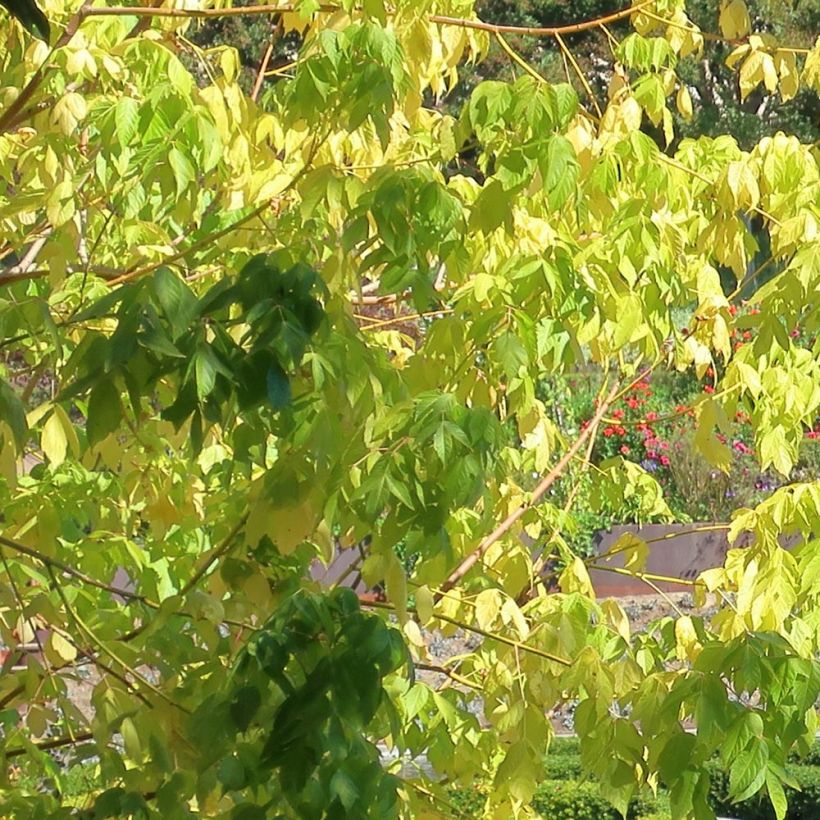

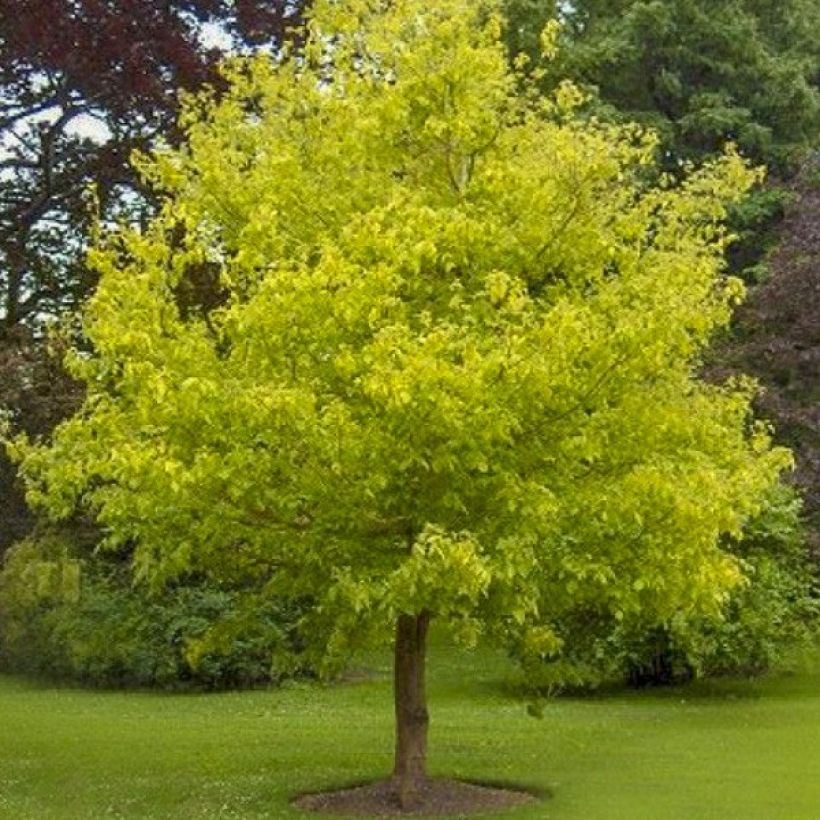

Plant habit
Flowering
Foliage
Botanical data
Acer
negundo
Kelly's Gold
Aceraceae
Box Elder, Ash-leaved Maple, Manitoba Maple
Cultivar or hybrid
Other Acer - Maple tree
Planting and care
Plant in spring or autumn in any fertile, deep and moist soil in a partially shaded or sunny position, but not scorching. Its golden foliage tolerates sunlight that is not too harsh. Beware of strong winds, as its wood is brittle. Keep the soil moist during the first two summers after planting. Mulching can be beneficial to maintain good soil moisture. Pruning is necessary for young plants, and then every 3 years to balance the branches and maintain a harmonious habit. Do not prune after December as sap rises very early.
Planting period
Intended location
Care
- , onOrder confirmed
Reply from on Promesse de fleurs
Spring-flowering shrubs
Haven't found what you were looking for?
Hardiness is the lowest winter temperature a plant can endure without suffering serious damage or even dying. However, hardiness is affected by location (a sheltered area, such as a patio), protection (winter cover) and soil type (hardiness is improved by well-drained soil).

Photo Sharing Terms & Conditions
In order to encourage gardeners to interact and share their experiences, Promesse de fleurs offers various media enabling content to be uploaded onto its Site - in particular via the ‘Photo sharing’ module.
The User agrees to refrain from:
- Posting any content that is illegal, prejudicial, insulting, racist, inciteful to hatred, revisionist, contrary to public decency, that infringes on privacy or on the privacy rights of third parties, in particular the publicity rights of persons and goods, intellectual property rights, or the right to privacy.
- Submitting content on behalf of a third party;
- Impersonate the identity of a third party and/or publish any personal information about a third party;
In general, the User undertakes to refrain from any unethical behaviour.
All Content (in particular text, comments, files, images, photos, videos, creative works, etc.), which may be subject to property or intellectual property rights, image or other private rights, shall remain the property of the User, subject to the limited rights granted by the terms of the licence granted by Promesse de fleurs as stated below. Users are at liberty to publish or not to publish such Content on the Site, notably via the ‘Photo Sharing’ facility, and accept that this Content shall be made public and freely accessible, notably on the Internet.
Users further acknowledge, undertake to have ,and guarantee that they hold all necessary rights and permissions to publish such material on the Site, in particular with regard to the legislation in force pertaining to any privacy, property, intellectual property, image, or contractual rights, or rights of any other nature. By publishing such Content on the Site, Users acknowledge accepting full liability as publishers of the Content within the meaning of the law, and grant Promesse de fleurs, free of charge, an inclusive, worldwide licence for the said Content for the entire duration of its publication, including all reproduction, representation, up/downloading, displaying, performing, transmission, and storage rights.
Users also grant permission for their name to be linked to the Content and accept that this link may not always be made available.
By engaging in posting material, Users consent to their Content becoming automatically accessible on the Internet, in particular on other sites and/or blogs and/or web pages of the Promesse de fleurs site, including in particular social pages and the Promesse de fleurs catalogue.
Users may secure the removal of entrusted content free of charge by issuing a simple request via our contact form.
The flowering period indicated on our website applies to countries and regions located in USDA zone 8 (France, the United Kingdom, Ireland, the Netherlands, etc.)
It will vary according to where you live:
- In zones 9 to 10 (Italy, Spain, Greece, etc.), flowering will occur about 2 to 4 weeks earlier.
- In zones 6 to 7 (Germany, Poland, Slovenia, and lower mountainous regions), flowering will be delayed by 2 to 3 weeks.
- In zone 5 (Central Europe, Scandinavia), blooming will be delayed by 3 to 5 weeks.
In temperate climates, pruning of spring-flowering shrubs (forsythia, spireas, etc.) should be done just after flowering.
Pruning of summer-flowering shrubs (Indian Lilac, Perovskia, etc.) can be done in winter or spring.
In cold regions as well as with frost-sensitive plants, avoid pruning too early when severe frosts may still occur.
The planting period indicated on our website applies to countries and regions located in USDA zone 8 (France, United Kingdom, Ireland, Netherlands).
It will vary according to where you live:
- In Mediterranean zones (Marseille, Madrid, Milan, etc.), autumn and winter are the best planting periods.
- In continental zones (Strasbourg, Munich, Vienna, etc.), delay planting by 2 to 3 weeks in spring and bring it forward by 2 to 4 weeks in autumn.
- In mountainous regions (the Alps, Pyrenees, Carpathians, etc.), it is best to plant in late spring (May-June) or late summer (August-September).
The harvesting period indicated on our website applies to countries and regions in USDA zone 8 (France, England, Ireland, the Netherlands).
In colder areas (Scandinavia, Poland, Austria...) fruit and vegetable harvests are likely to be delayed by 3-4 weeks.
In warmer areas (Italy, Spain, Greece, etc.), harvesting will probably take place earlier, depending on weather conditions.
The sowing periods indicated on our website apply to countries and regions within USDA Zone 8 (France, UK, Ireland, Netherlands).
In colder areas (Scandinavia, Poland, Austria...), delay any outdoor sowing by 3-4 weeks, or sow under glass.
In warmer climes (Italy, Spain, Greece, etc.), bring outdoor sowing forward by a few weeks.

